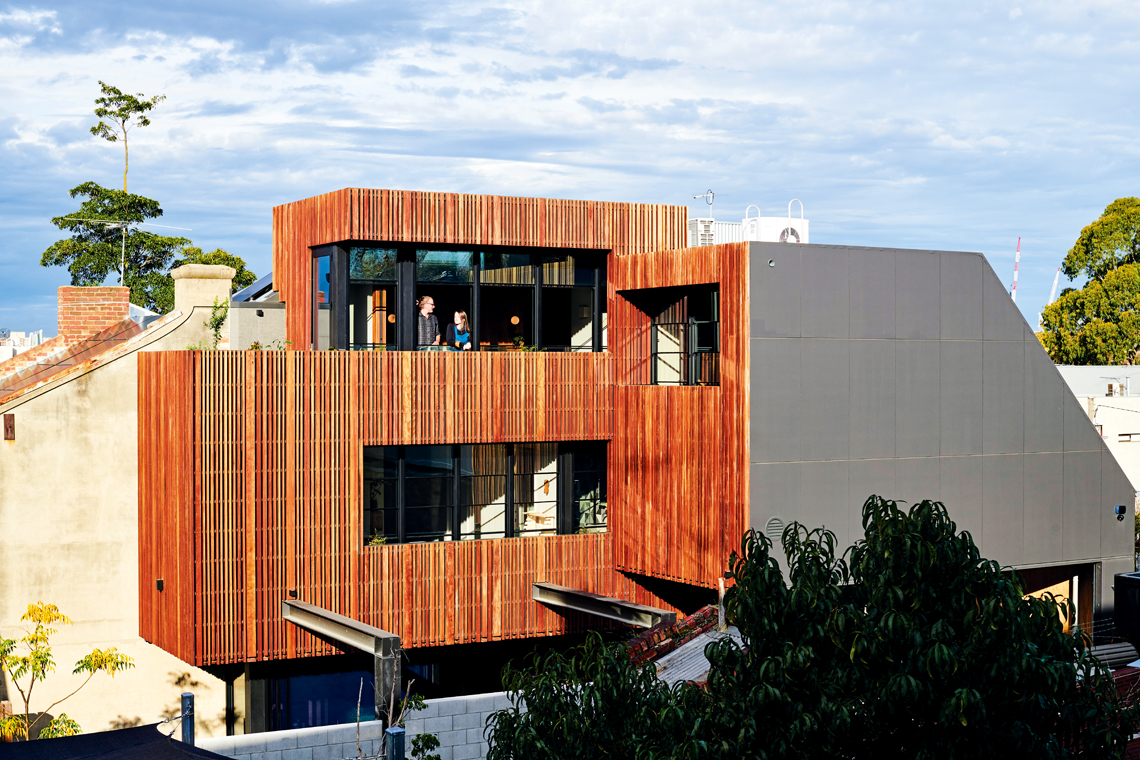Building a house can be a long and arduous process, but imagine doing it from halfway across the world. Architect and interior designer Annelise Tiller and husband Kim were living in Dubai when they purchased an 1890s Victorian terrace in Carlton, Victoria. Kim came back to Australia first to undertake demolition and start building while Annelise looked after the kids, worked full time and managed the design remotely.
Delays in planning approvals, COVID-19 challenges, the discovery of artefacts, and a concrete blowout — along with a six-hour time difference — made this build one to remember. However, Annelise’s passion and persistence ultimately led to the creation of a contemporary family home that elevates the connection between interior and exterior to an entirely new level.

Where History Meets Modern Craft
“We wanted to create a home that captured our passion for detail and materiality, one that exposed and celebrated carefully crafted built form. Much like Melbourne’s rich laneways, the interior reveals itself as a series of emerging shaped spaces while peeling back layers of history,” says Annelise.
Aptly named Lanes End, this property sits at the end of a laneway, and its Victorian facade remains relatively intact. However, from the abutting lane, the home presents itself as “unashamedly contemporary.”

Carlton Lanes End Terrace was both a renovation and an extension rolled into one, with extensive demolition and excavation required. Given the property’s double width, Annelise couldn’t deny the opportunity it presented: a home office and family home with multiple points of entry. As a result, the project transformed into a four-storey, four-bedroom, five-bathroom family home, complete with a basement workshop and a “stackable” carport. Additionally, level one includes the home office space, which has been split to provide seclusion from the main dwelling, featuring its own private entry. In the future, this area could serve as accommodation for adult children or be used for visits from grandparents.

Sustainable Design for the Future
From biophilic design to efficient power and water infrastructure, Annelise has considered sustainability and the future of this project in all aspects of its design. The new extension optimises solar orientation, thermal insulation and provision for a second residential entry, while a 15kW photovoltaic system on the roof provides off-grid power for heating, hot water, kitchen appliances and electric vehicle charging points.
Biophilic design principles were applied throughout the Carlton Terrace interiors, emphasizing natural ventilation and daylight in every room. Both external and internal vegetation were incorporated on all levels, alongside a natural material palette. The interiors feature repurposed original timber floorboards, reclaimed ironbark, reused bluestone pitchers, and locally sourced and reclaimed brick, complemented by raw concrete surfaces. As a result, Lanes End’s interior feels raw and organic, with a strong use of black that adds depth and intensity. The space is brightened by an abundance of operable windows and skylights, while window planter boxes provide privacy, screening, and vibrant color to the internal spaces.

“The project pursues an ecosystem of sustainable initiatives that draws embodied energy from the past and reduces use in the future,” Annelise says. “ Carlton Terrace is not a static object but hosts the growth and home beyond its human inhabitants. The design of Lanes End achieves a spacious family home despite building on a dense inner-city plot. The architecture does not rely on ostentatious design gestures; however, focuses on rawness of materiality and expression of construction detail.”
Article featured by Grand Designs Australia Magazine 11.4













